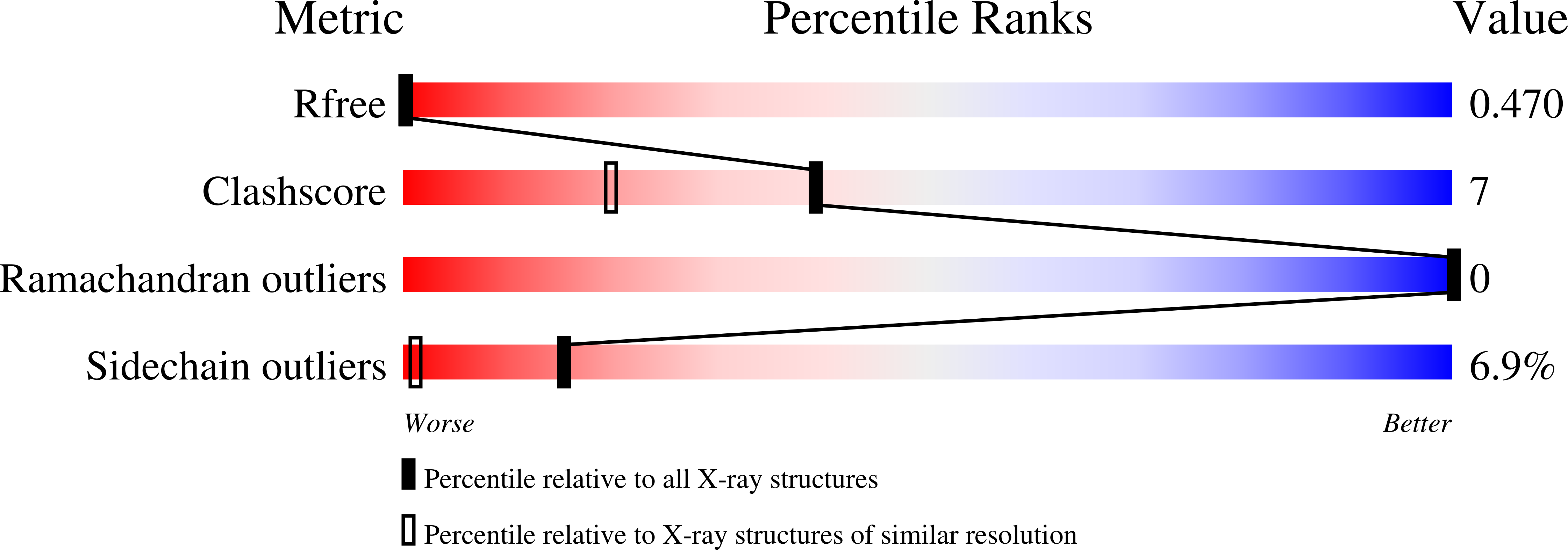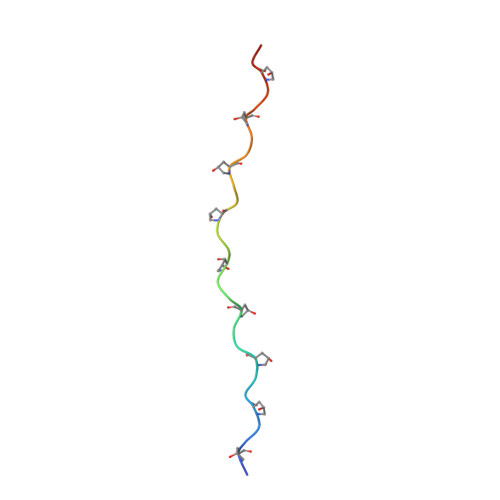Unique side chain conformation of a leu residue in a triple-helical structure
Okuyama, K., Narita, H., Kawaguchi, T., Noguchi, K., Tanaka, Y., Nishino, N.(2007) Biopolymers 86: 212-221
- PubMed: 17373653
- DOI: https://doi.org/10.1002/bip.20724
- Primary Citation of Related Structures:
2DRT, 2DRX - PubMed Abstract:
Single crystal structures of host-guest peptides, (Pro-Hyp-Gly)(4)-Leu-Hyp-Gly-(Pro-Hyp-Gly)(5) (LOG1) and (Pro-Hyp-Gly)(4)- (Leu-Hyp-Gly)(2)-(Pro-Hyp-Gly)(4) (LOG2), have been determined at 1.6 A and 1.4 A resolution, respectively. In these crystals, the side chain conformations of the Leu residues were (+)gauche-trans. This conformational preference for the Leu side chain in the Leu-Hyp-Gly sequence was explained by stereochemical considerations together with statistical analysis of Protein Data Bank data. In the (+)gauche-trans conformation, the Leu side chain can protrude along the radial direction of the rod-like triple-helical molecule. One strong hydrophobic interaction of the Leu residue was observed between adjacent molecules in the LOG2 crystal. Because the Leu-Hyp-Gly sequence is one of the most frequently occurring triplets in Type I collagen, this strong hydrophobic interaction can be expected in a fibrillar structure of native collagen. All the Leu residues in the asymmetric unit of the LOG1 and LOG2 crystals had water molecules hydrogen bonded to their NH. These water molecules made three additional hydrogen bonds with the Hyp OH, the Gly O[double bond]C, and a water molecule in the second hydration shell, forming a tetrahedral coordination of hydrogen bonds, which allows a smaller mean-square displacement factor of this water oxygen atom than those of other water molecules. These hydrogen bonds stabilize the molecular and packing structures by forming one O[double bond]C(Gly)---W---OH(Hyp) intra-molecular linkage and two NH(Leu)---W---O[double bond]C(Gly) and NH(Leu)---W---OH(Hyp) inter-molecular linkages.
Organizational Affiliation:
Department of Macromolecular Science, Graduate School of Science, Osaka University, Toyonaka, Osaka 560-0043, Japan. okuyamak@chem.sci.osaka-u.ac.jp















